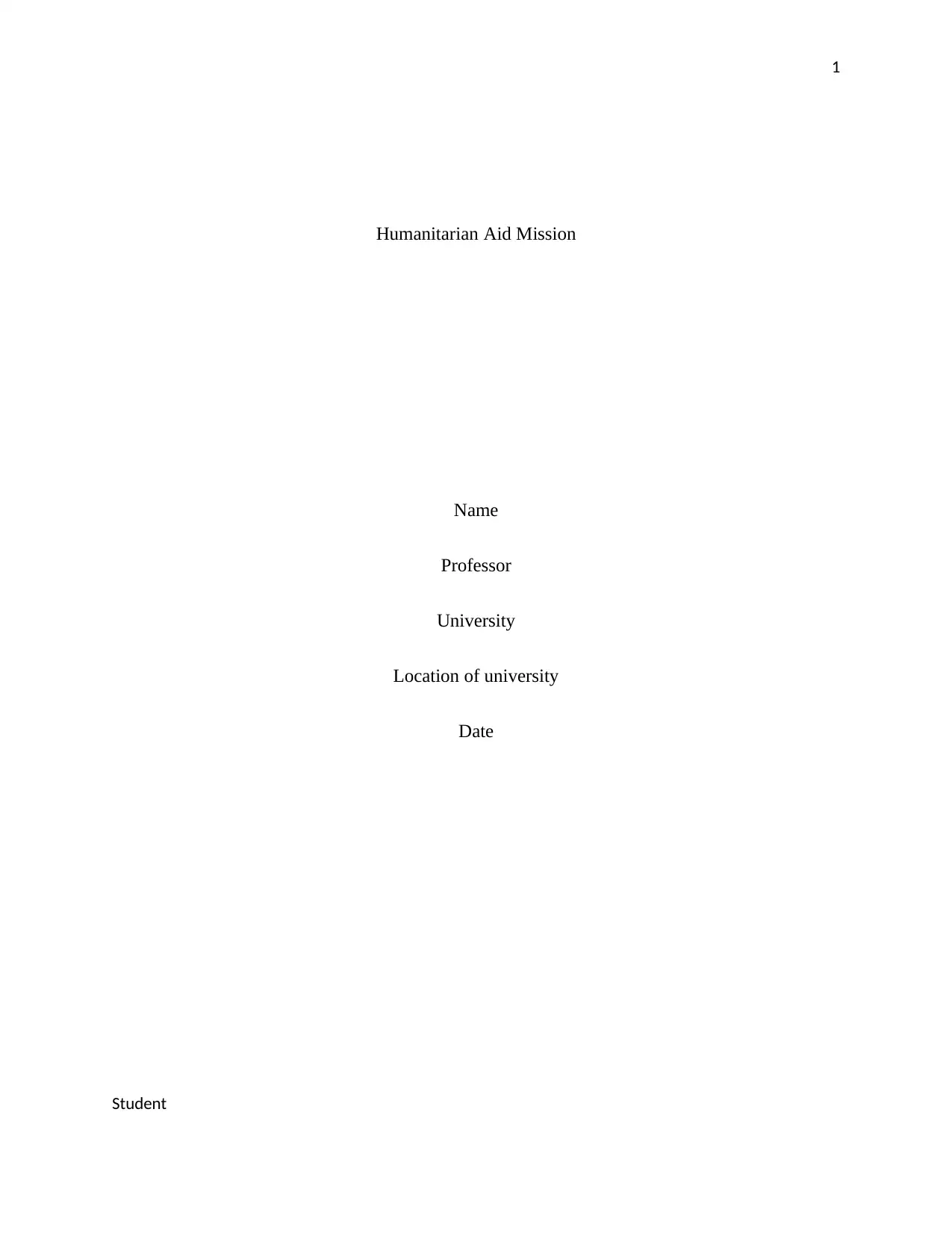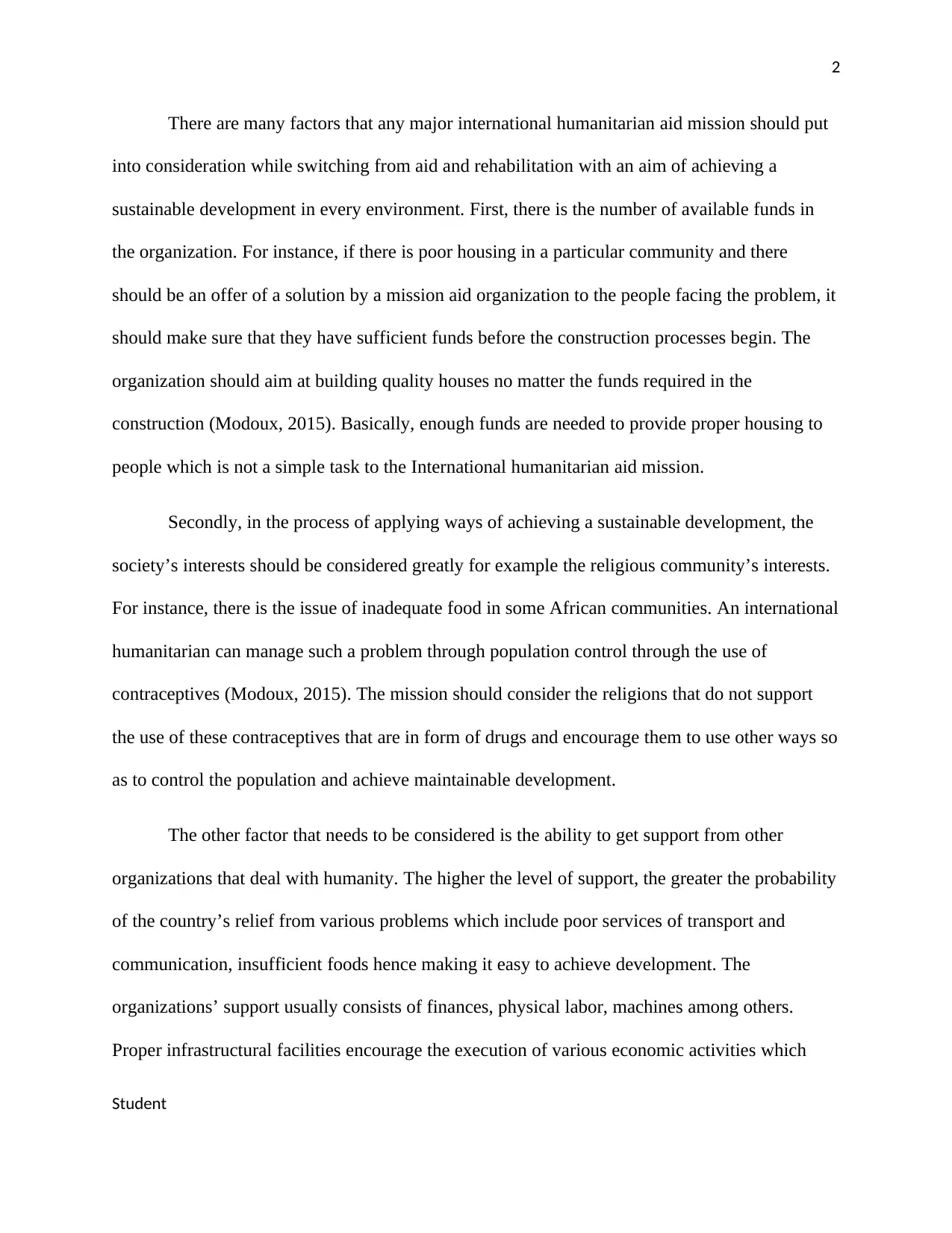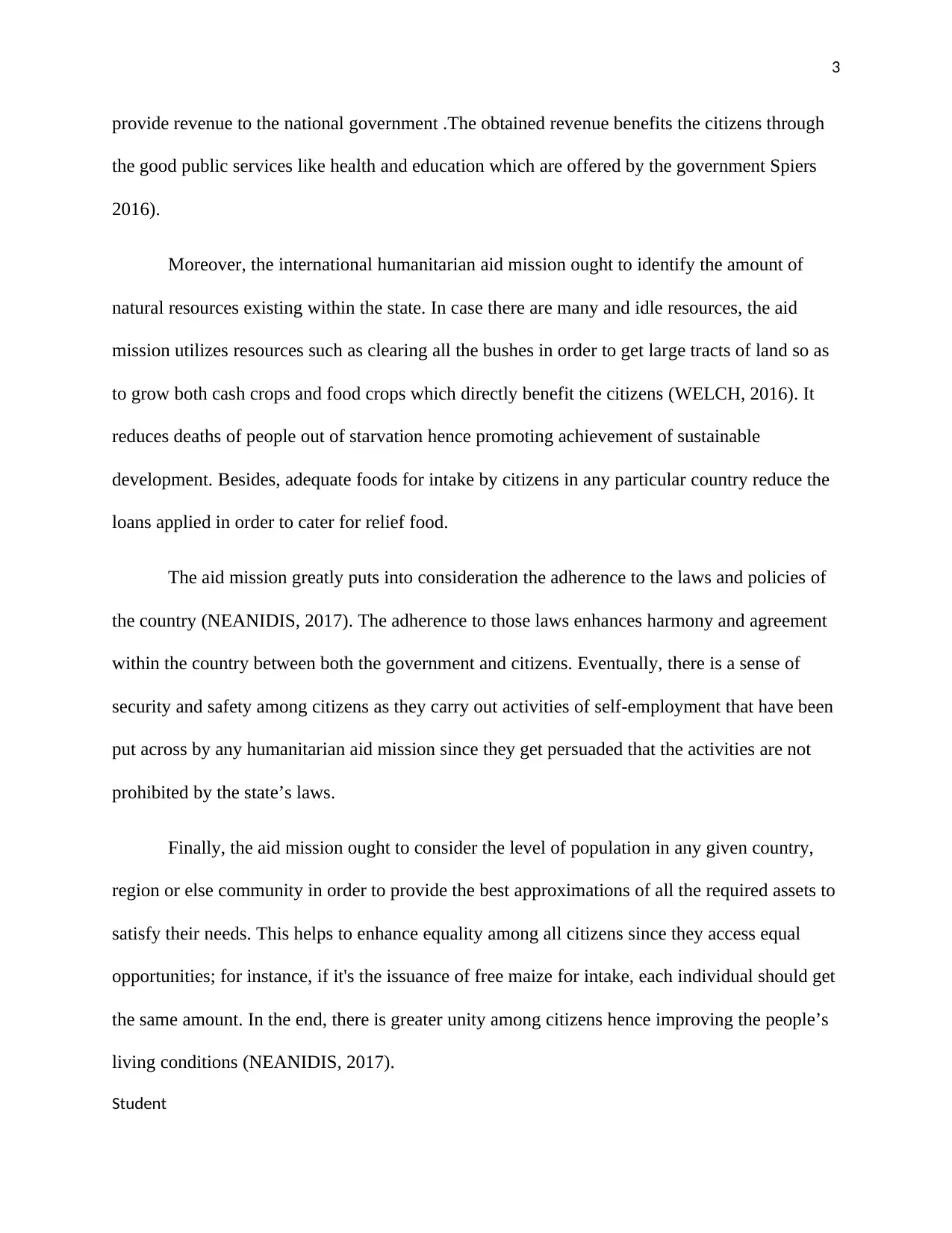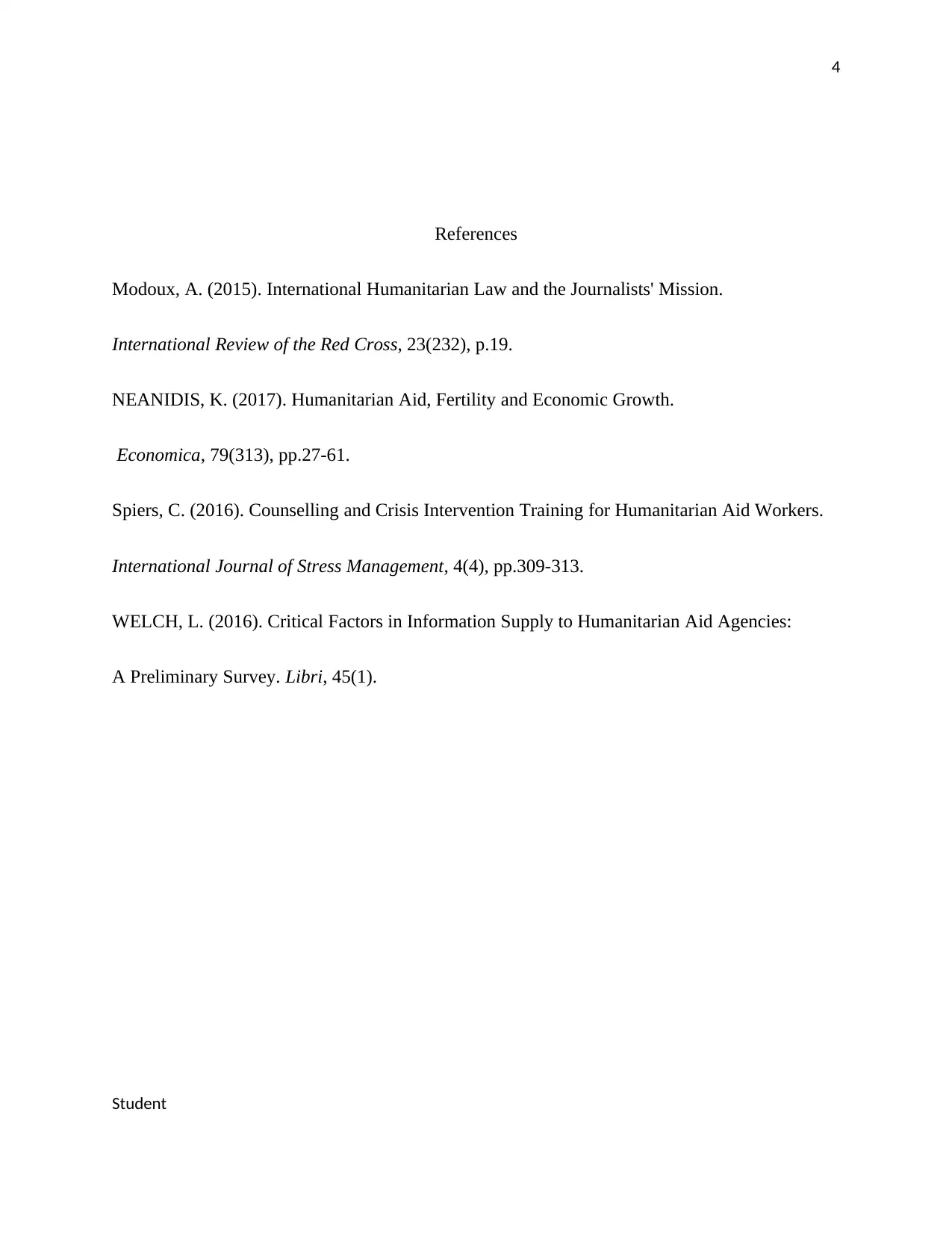University Humanitarian Aid Mission Report: Factors for Development
VerifiedAdded on 2023/03/17
|4
|794
|79
Report
AI Summary
This report delves into the crucial factors that international humanitarian aid missions must consider when transitioning from relief and rehabilitation to sustainable development, particularly in post-disaster environments. It emphasizes the significance of sufficient funding for quality infrastructure, such as housing, and the importance of aligning with societal interests, including religious beliefs, when implementing strategies like population control. The report also highlights the need for collaboration with other humanitarian organizations to secure financial and logistical support, as well as the critical role of assessing and utilizing natural resources to promote economic activities and improve public services. Furthermore, it stresses the importance of adhering to local laws and policies to foster stability and security, and of considering population size to ensure equitable distribution of resources. The report concludes by underscoring the importance of these factors in achieving long-term sustainable development and improving the living conditions of affected populations.
1 out of 4











![[object Object]](/_next/static/media/star-bottom.7253800d.svg)